We usually get our wildlife fix in national parks but there isn’t much chance of seeing Australian sea lions just swim by your campsite and say hello.
They’re incredibly rare (i.e. endangered), and only live in South Australia and Western Australia.
Seal Bay on Kangaroo Island is the third-largest of their colonies, with about 800 sea lions calling the beaches around Seal Bay their home.
You can watch them frolick from afar. Or, you can say hello to these impressive creatures up close, right on the beach.
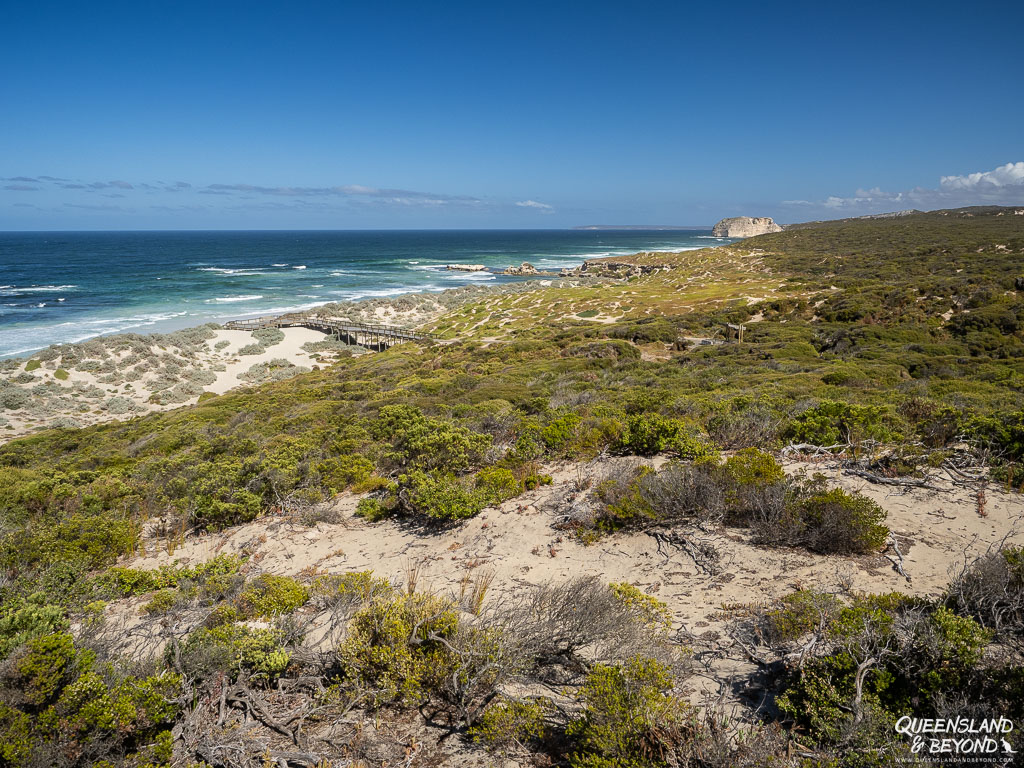
After hiking the Kangaroo Island Wilderness Trail, we had another day on the island before heading back home. And before we did that, I was more than keen to say hello to these beauties.
VISITING SEAL BAY: A QUICK GUIDE
Seal Bay Conservation Park is managed by National Parks & Wildlife Service South Australia.
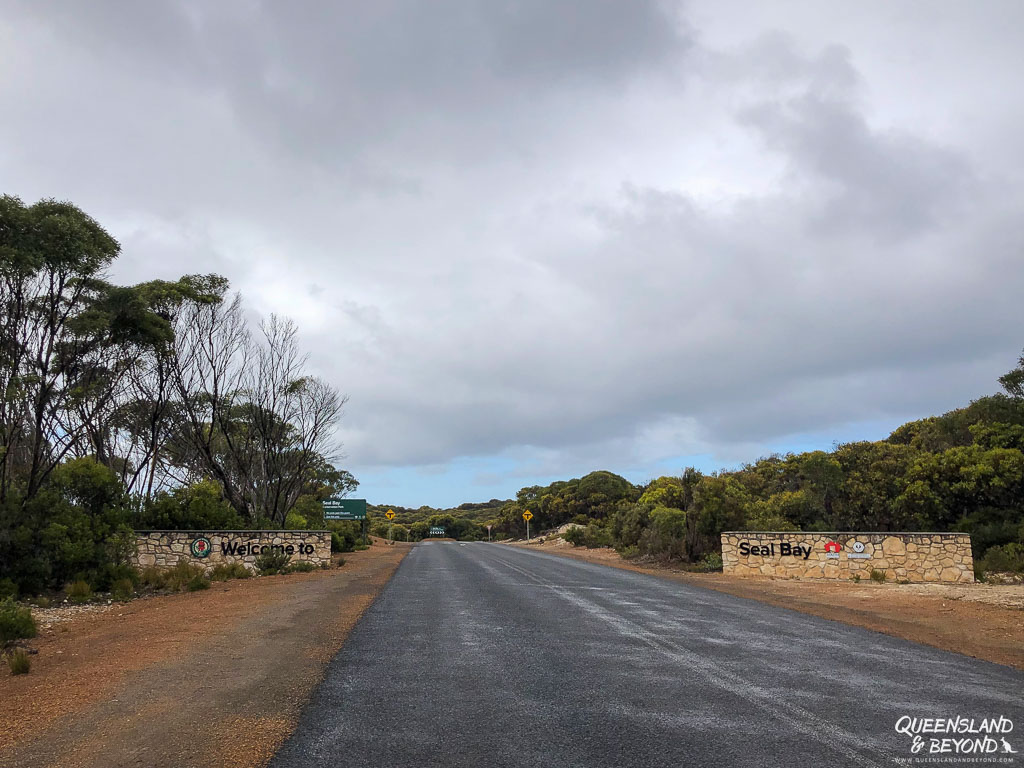
Being a conservation area, you can’t just stroll around the colony as you like. Instead, you need to join a guided tour to gain beach access. Alternatively, you can meander along the extensive boardwalk on a self-guided tour.
NPWS South Australia has recently added two more tours, a sunrise/sunset tour and a research tour option. Both are longer and on the pricier end but no doubt fascinating. I would have been very interested in the research tour but the price tag is a little hard to swallow.
VISITING SEAL BAY CONSERVATION AREA AT A GLANCE
TOUR OPTIONS: 1. Self-guided boardwalk ($19.10 adult) | 2. Seal Bay guided tour, 45 min ($42 adult) | 3. Sunrise/sunset tour, 1 hr 45 min ($177 adult) | 4. Research tour, 1 hr 45 min ($344 adult)
LOCATION: Seal Bay Road, Kangaroo Island, South Australia
WEBSITE: Seal Bay Conservation Park
Since this is a protected conservation area, the sea lions are just living their lives, which seemed to involve a lot of napping in the dunes and sunbaking on the beach when we visited.
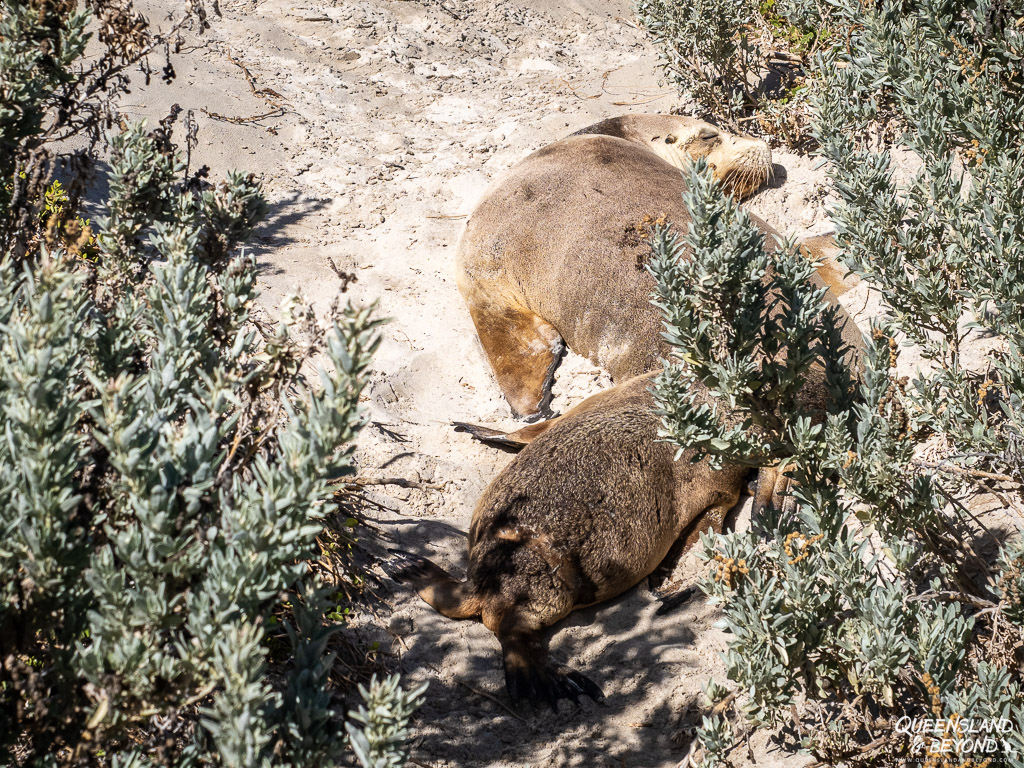
You’re in their habitat and the guides won’t allow you to get too close.
AUSTRALIAN SEA LIONS
So here’s a bit of what I’ve learned about Australian sea lions.
Apparently there are ‘eared’ and ‘earless’ seals.
Australian sea lions are ‘eared’ seals, meaning they wiggle their ears (just kidding, I have no idea if they can wiggle their tiny ears). Unlike ‘earless’ seals, sea lions can prop themselves up and waddle with their back flippers, which is quite adorable.
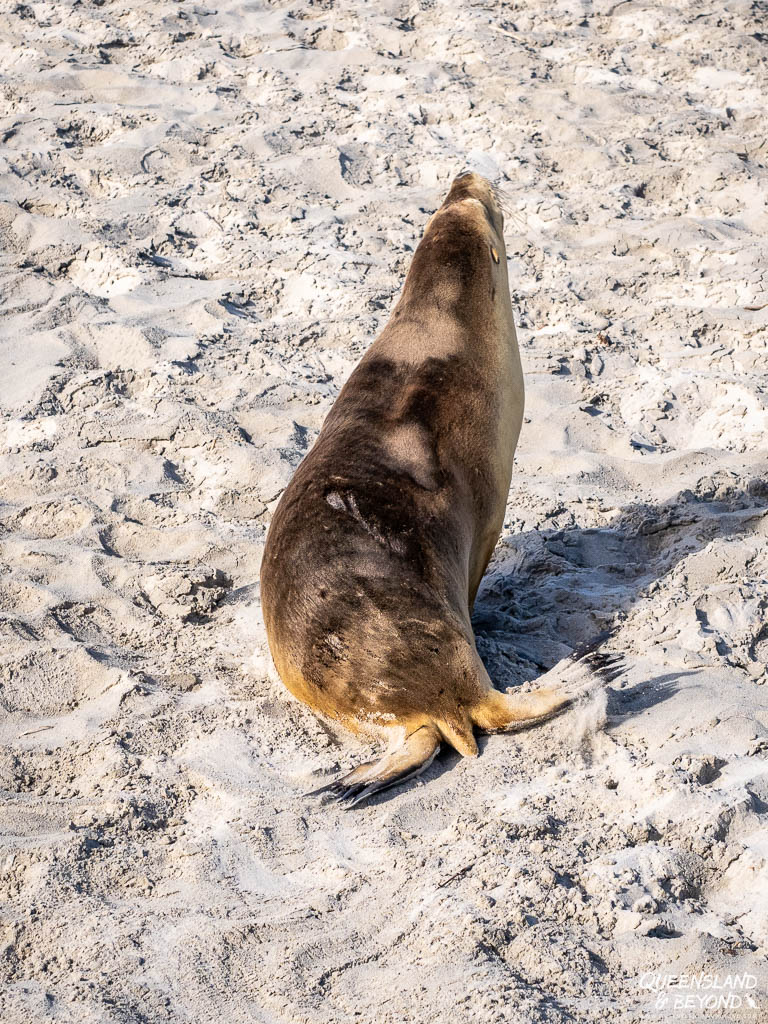
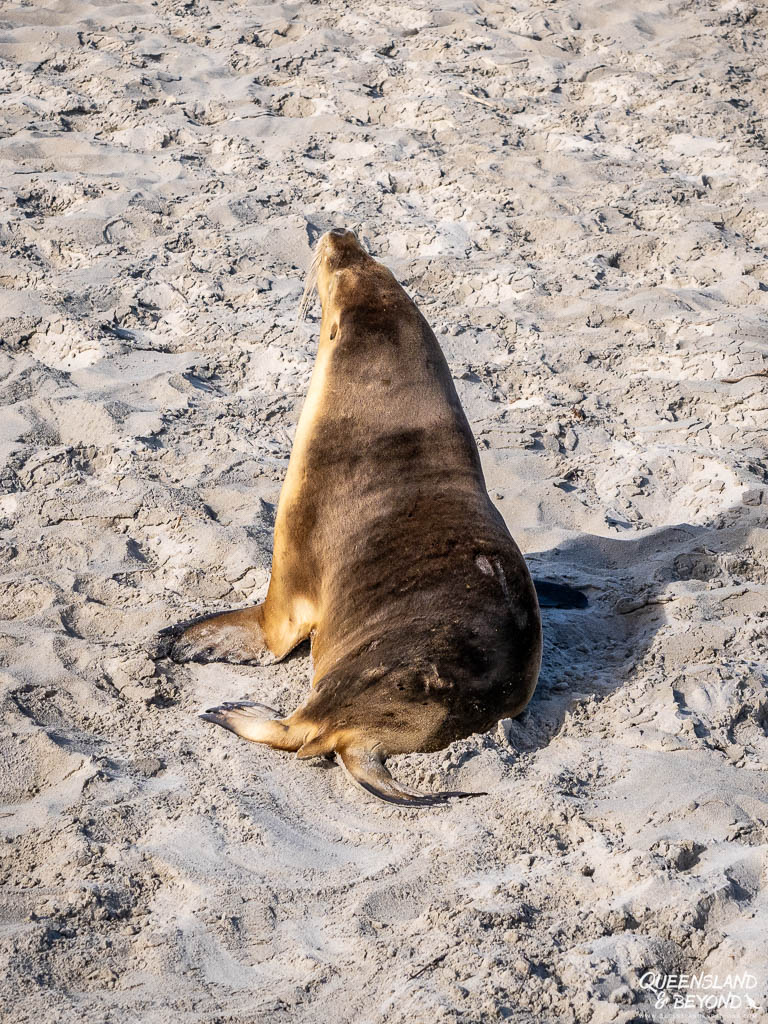
If you go to Admirals Arch (Flinders Chase National Park) on Kangaroo Island, you’ll see lots of ‘earless’ fur seals. And if you have just a tiny bit of patience, you’ll notice that they move differently. They can’t waddle with their back flippers and instead do this belly-flopping action to propel themselves forward.
To be honest, I hadn’t really made the connection (see how observant I am) until the guide pointed it out.
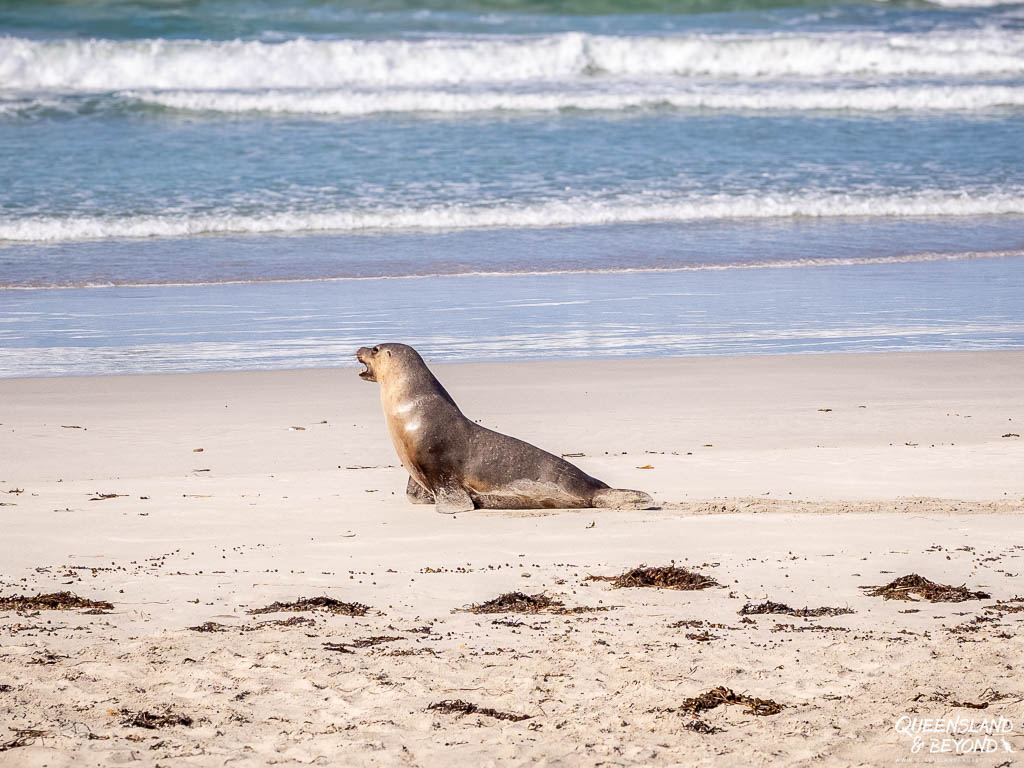
FUN FACTS ABOUT AUSTRALIA SEA LIONS
- Males can weigh up to 350kg, and even females can be 100kg. I wouldn’t want to get in the way of either of them!
- They can live up to 25 years but life expectancy is more commonly around 17-20 years.
- Males have a blond mane (hence sea ‘lions’) while females are ash grey. Hm, nice.
- Australian sea lions have a refined palate and like to feast on ocean floor creatures like rock lobsters, octupus, small rays and shark. Only the best for them. 🙂
- Females return to the same breeding colony throughout their lives as do their female pups so colonies don’t tend to mix much.
- Feeding expeditions usually take three days before they’re back on the beach for a rest.
- Australian sea lions almost died out in the 19th century and were hunted relentlessly for their leather and oil. The population as a whole has somewhat recovered but is in general decline.
- The biggest threat to their survival is the human impact (rubbish, fishing gear debris, boat contact, pollution, overfishing, etc.) but also other species (great white sharks) and aggressive behaviour by juveniles and young adult males.
TAKING A GUIDED TOUR OF SEAL BAY
Guided tours run multiple times a day and allow you to get onto the beach where sea lions may or may not be lazing about. Nothing’s guaranteed.
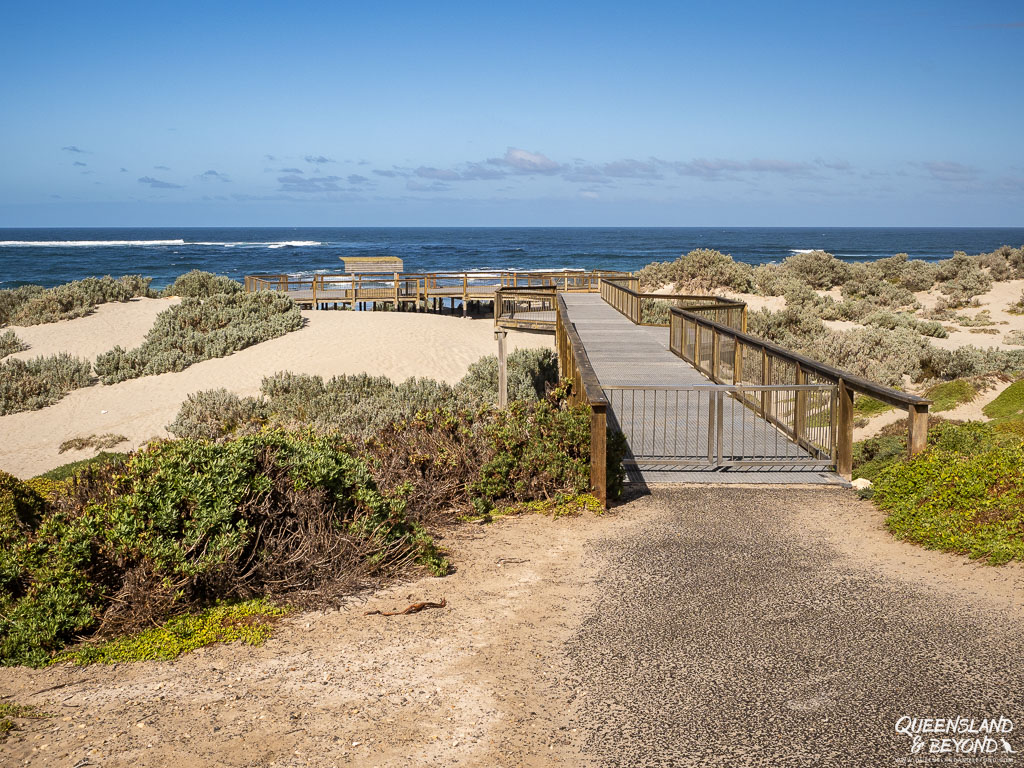
We didn’t book ahead but it’s probably a good idea to do so during the school holidays or over the summer months.
There was only six of us on the tour so we got to ask lots of questions, only to have forgotten half of it by the time we’d left.
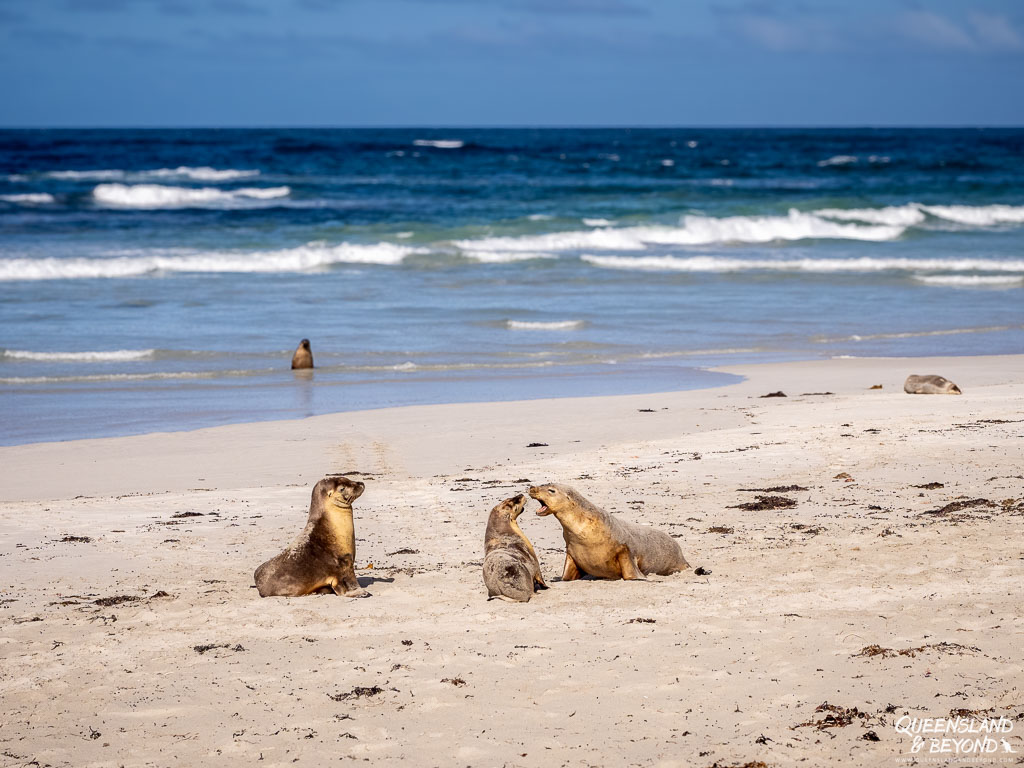
The guides are watchful and herd you around the beach carefully. They won’t know where any sea lions may be until you step off the boardwalk so the tours are pretty adhoc depending on what’s happening on the beach.
You have to stick with the group as the guides are always on the lookout for any sea lion that might get agitated due to the human presence.
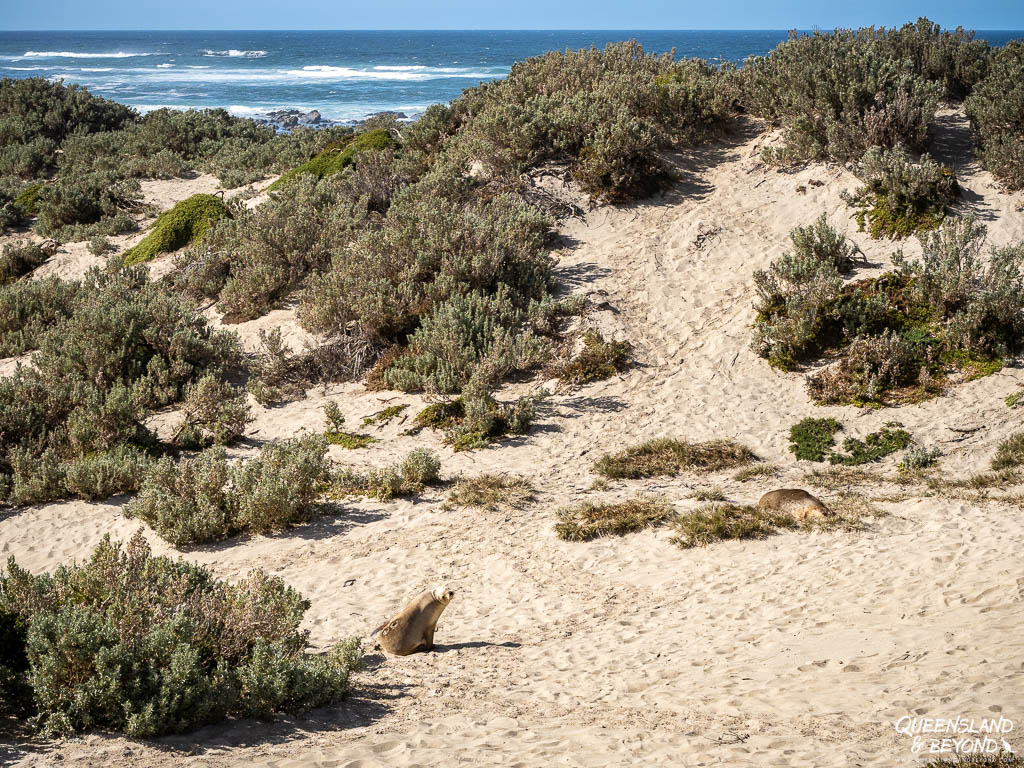
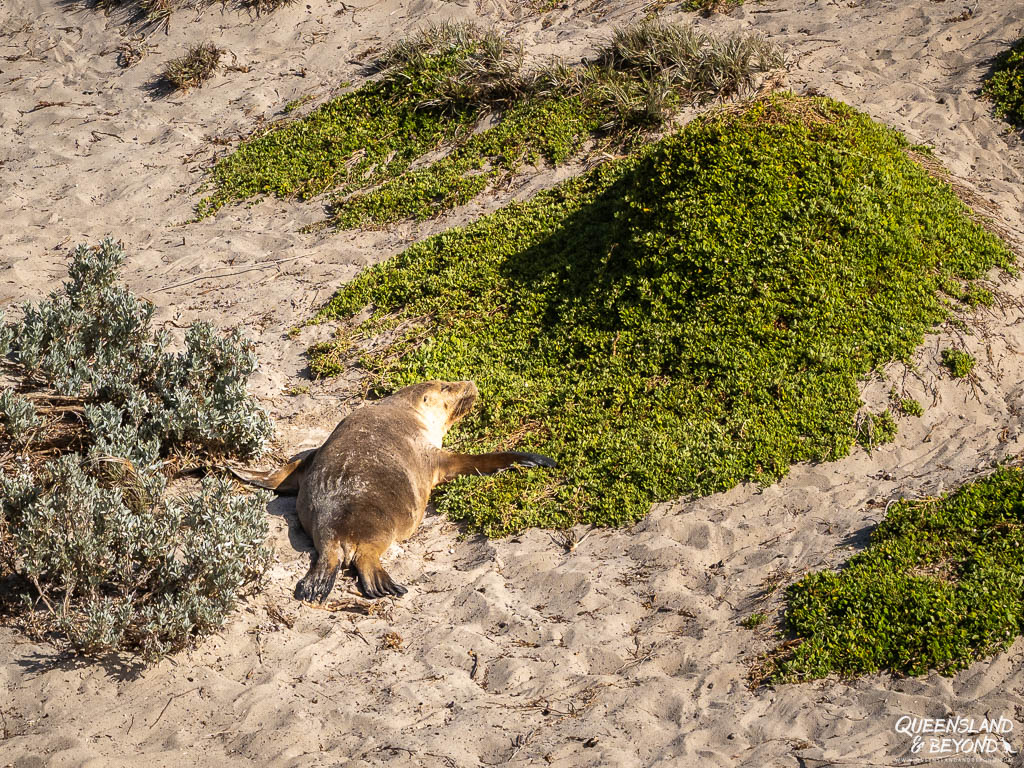
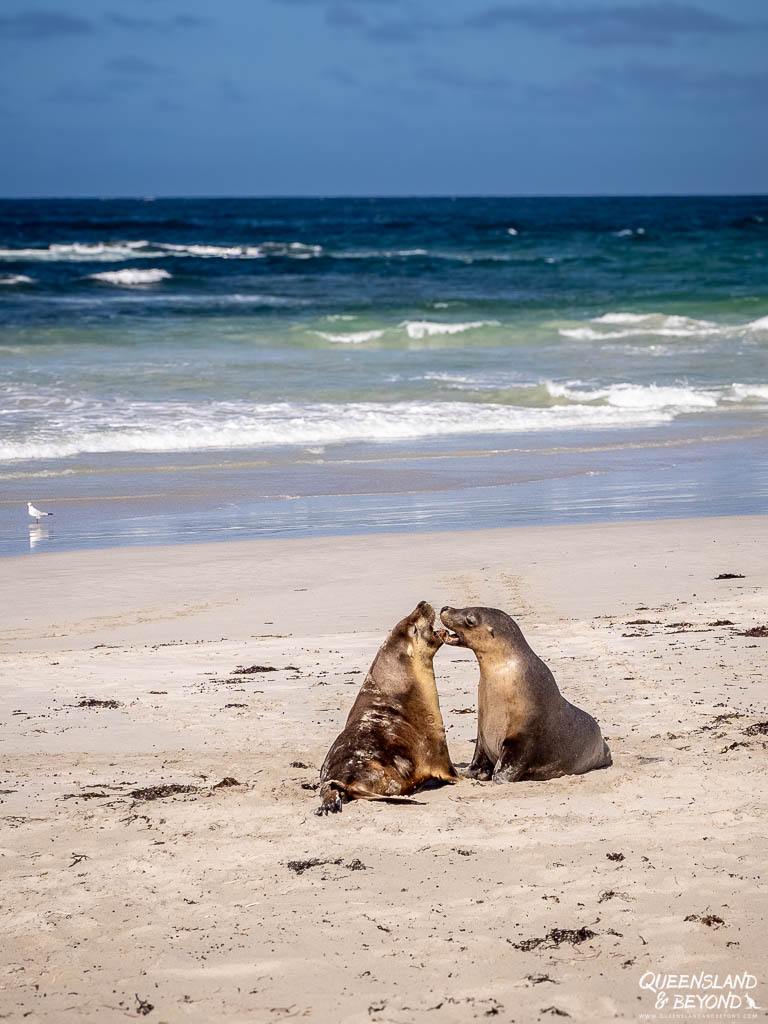
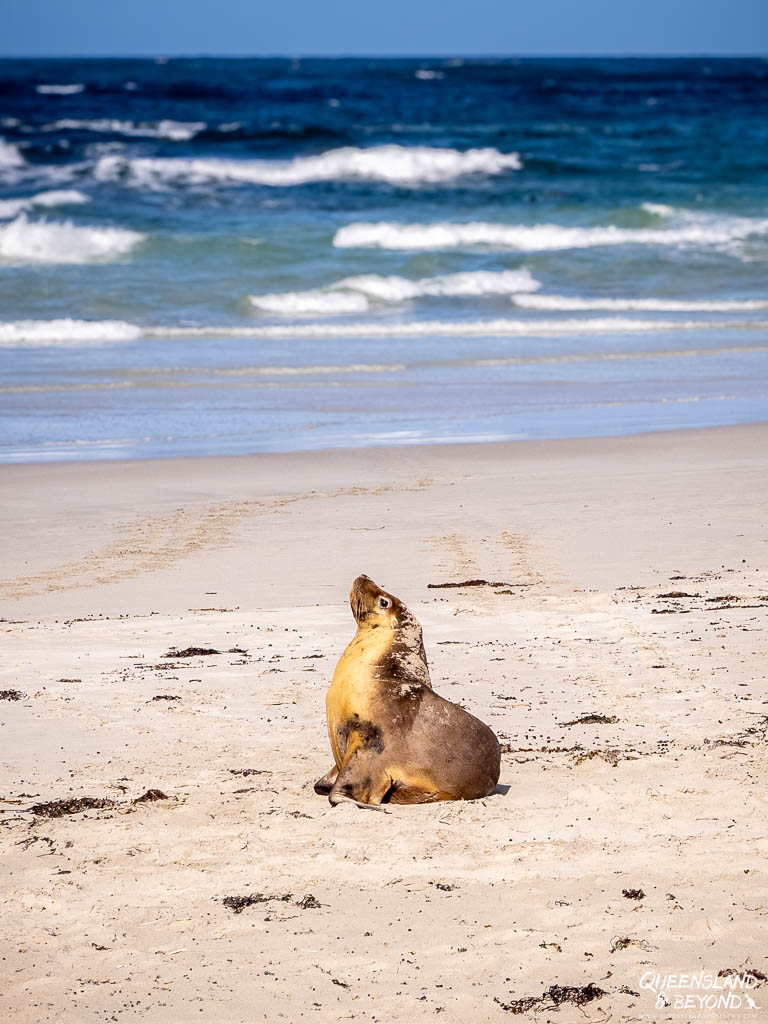
Since you’re not allowed to get too close to the sea lions, take your long lens if you want close-up shots of these beautiful creatures. Sadly, I’d left mine at home since it’s just too heavy to take on a hike.
EXPLORING THE SELF-GUIDED BOARDWALK
You can also explore the self-guided boardwalk as part of your admission for the guided tour.
Now this is a boardwalk!
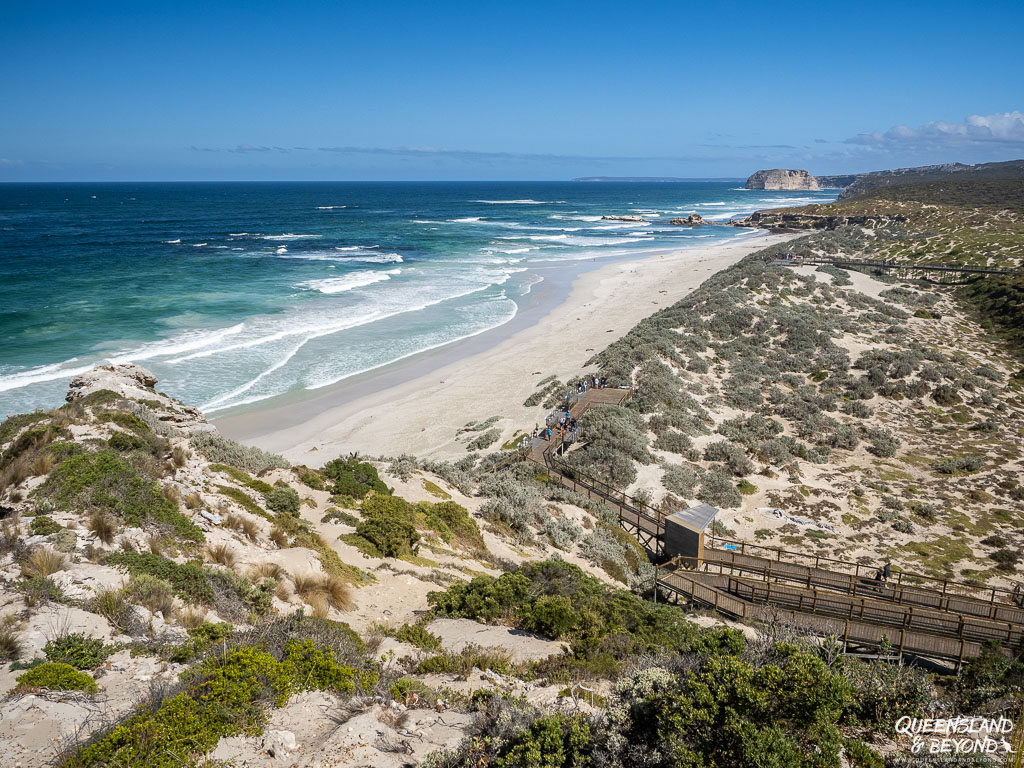
It is long (450m) and winds down the dunes, ending on a viewing platform just above the beach. There are plenty of interpretative signs to read along the way, and most of the information that’s presented on the guided tour is actually on these panels as well.
The sea lions like to hide in the dunes so keep your eyes out for them there, not just on the beach.
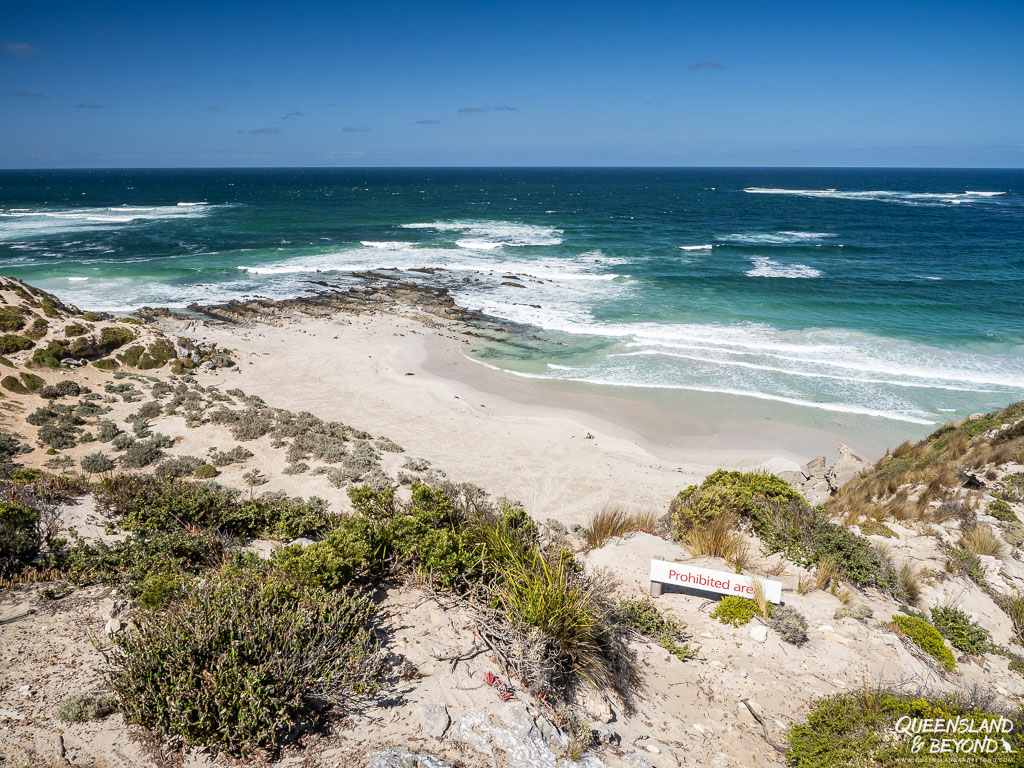
We spent just as much time on the boardwalk as we did on the guided tour. I couldn’t get enough of watching the pups play in the rockpools from the lookout.
FINAL THOUGHTS
Seal Bay is a popular destination and it’s not hard to see why.
The sea lions are entertaining and impressive as they roll around in the shallow waters and frolic on the beach. That is, when they’re not having a nap. 🙂
Happy sea lion watching,

SAVE TO PINTEREST
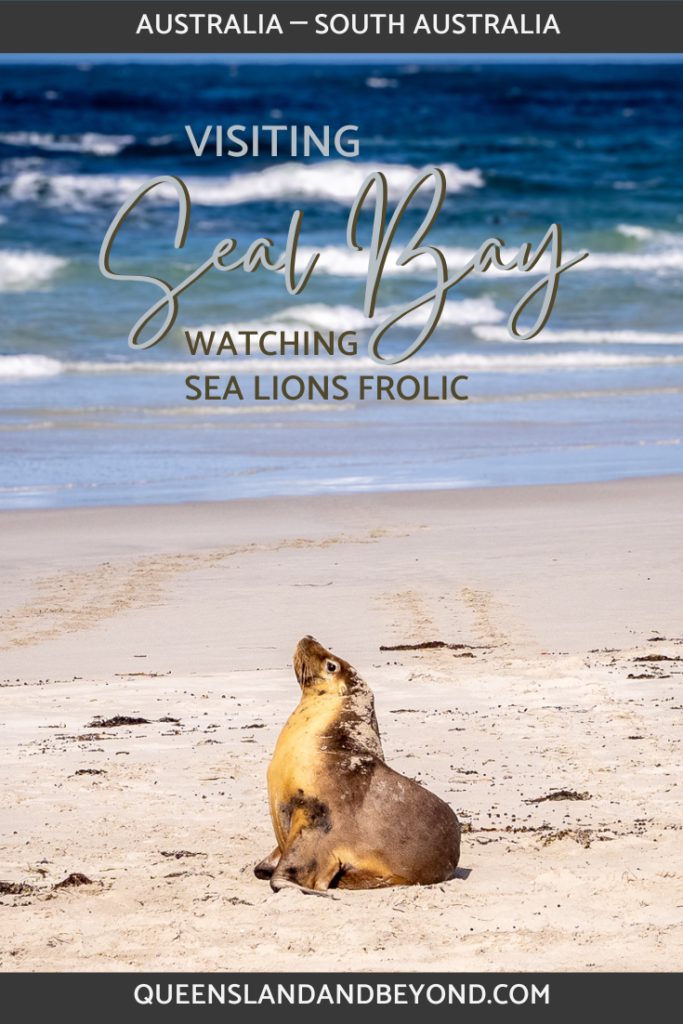
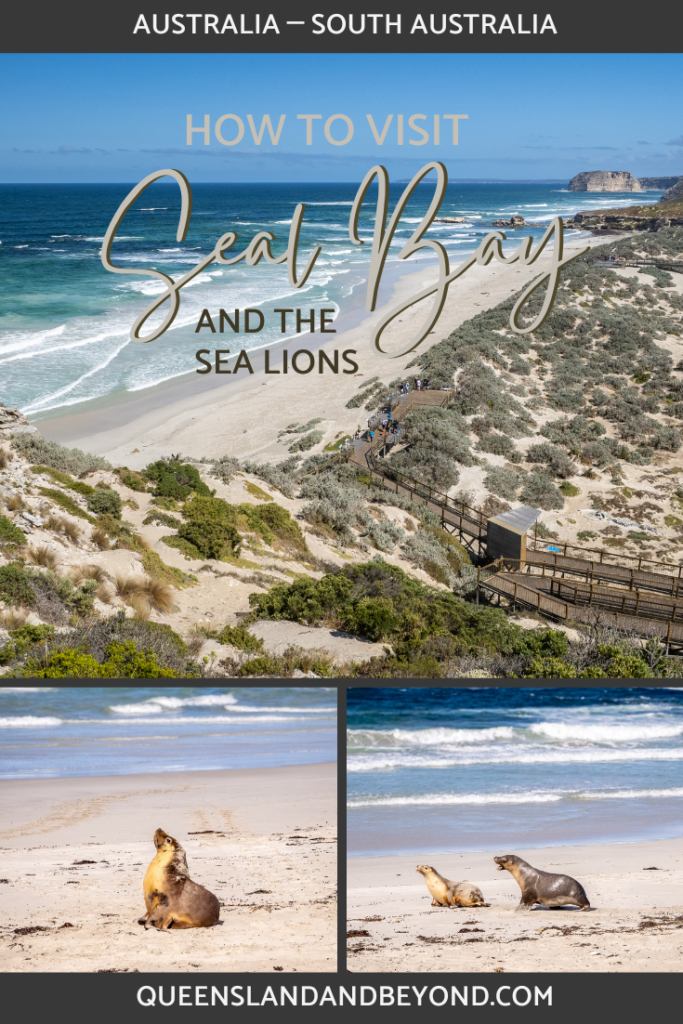

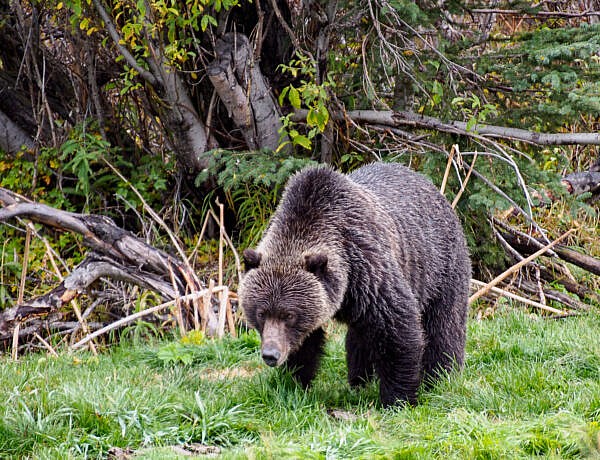


No Comments